Kemp Elektroniks
SCHUMANN COMPOSER
6-Way
Incl. 21 % TAX € 1,995.00
Demo unit available!
- Worlds first full range Schumann generator
- 6 SR Modules (SR PLUG) with each an individual shunt power supply
- 6 PCB stripline Spiral Scalar Tesla Antennas of 192 m(!) length each
- The intensity of all frequencies can be decreased or increased by a factor two
- Shunt device, no dynamic restriction possible
- Can be combined with all other mains related products
- 12 Gabriel-Tech Chips internal
- All modules separately potted in resin combined with Shungite
- Available in 230 or 115 Vac
- Power consumption 15 W
- Weight 4 kg
- Dimensions 290x80x260 mm
World’s first full range Schumann resonance generator!
Kemp Elektroniks proudly presents a component that is unique worldwide: the first Schumann resonance generator which produces the entire natural Schumann resonance spectrum! The effects on the perception of video and audio are unique also and can’t be missed!
Schumann resonance is a natural phenomenon, first thoroughly investigated by German physicist Wilfried Otto Schumann in 1952. He discovered that earth’s atmosphere acts like a resonant cavity for electromagnetic waves with very low frequency and intensity. The driving mechanism is electrical discharges in the atmosphere (lightning). The fundamental frequency is 7.8 Hz. Weaker “overtones” can be observed at 14, 21, 26, 33 and 39 Hz.
Frequency and intensity of the electromagnetic radiation from your mobile phone is millions of times stronger than those values for the natural Schumann resonance. This means that the Schumann phenomenon is completely harmless for a human being. Moreover, the human brain generates electromagnetic waves itself; the frequencies roughly coincide with the Schumann spectrum! That’s why researchers assume that the natural Schumann resonance waves have relevance for the wellbeing of human kind.
Probably this explains the reported positive effects of our Schumann Resonance Plug on the perception and appreciation of video and audio. This SR-Plug is an oscillator tuned at the fundamental Schumann frequency of 7.8 Hz which is radiated with very low intensity by an antenna wire. One might say the SR-Plug offers inside the house a helping hand to an already existing natural phenomenon.
Many reviewers and countless music lovers worldwide have highly praised the SR-Plug. Thousands have been sold. The Schumann Composer is the natural extension of the SR-Plug to the entire Schumann resonance spectrum! Furthermore, the Schumann Composer features a better power supply. The Schumann Composer allows adjustment of the intensity for each frequency. The designation “Schumann Composer” was not accidental: by turning the knobs, you can create your own “Schumann symphonie”! All knobs in the middle position resembles the natural ratio of intensities.
Reviews:
Kemp Elektroniks SCHUMANN COMPOSER 6-Way Review by Matej Isak @ monoandstereo.com
“In a finely balanced system, the effects of such a device become apparent, indicating its meaningful contribution to the overall sonic experience. Unlike many high-end accessories, the Kemp Elektroniks Schumann Composer 6-Way operates from within the very core of the music. It is non-distracting, non-invasive, and naturally calming – not by softening the sound, but by refining the sensory engagement in a far more interactive and immersive way than expected. Once experienced, it is difficult to return to listening without it.”
“Given the cost of some high-end components today, the Kemp Elektroniks Schumann Composer 6-Way stands out as an affordable way to improve musical immersion. For this reason, I am pleased to present it with the Mono & Stereo 2025 High Recommendation Award.”
 Dutch reviewer and tweak expert John van Polen:
Dutch reviewer and tweak expert John van Polen:
“After a power outage, I powered up my big stereo system and noticed a certain change in the sound. A certain “roughness” bothered me. The next day, it still wasn’t any better. First then I noticed that I had not powered up my Schumann Composer … . I would describe the effect of the Schumann Composer as a kind of extra refinement that pervades all aspects of the reproduction. I do not know of any other accessory that works so subtle at first sight and at the same time has such a comprehensive effect. Presumably, these improvements cannot be attained any other way. Turning the knobs yields all kinds of subtle changes. For instance, a soloist can be positioned somewhat more forward in the soundstage. However, don’t keep turning the knobs; first of all, enjoy better video and audio!”
Review Kemp Elektroniks Schumann Composer by Werner Ero in Music Emotion & FWD.nl:
“No, there is no extra octave in the low end, the reproduction is not two times better at once and even bats with their ultrasonic ears do not drop dead in the garden. But what it does is creating a striking sense of satisfaction and a relaxed “out of the box” feeling. Besides, already with the knobs in the natural position, tone colors appear more saturated and a somewhat “diffuse rendition” sets in like one may experience live in a concert hall or by listening to an acoustic musical instrument. Imagination? Absolutely no; when I turn the switch, this impression is gone straight away and everything sounds like it was before.”
“I already knew that the Schumann fundamental frequency of 7.8 Hz and the first harmonic of 14 Hz yield more quiescence, a bigger spatial perception and more transparancy. That, for instance, turning the 21 Hz knob would position the central musical instruments and voices more forward or backward, came as a big surprise for me.”
Customer review by Hans from Zeeland, the Netherlands:
“I don’t feel the need to be reserved in my judgment: with the Schumann Composer (=SC), Kemp has developed a fantastic device that has elevated the sound of my audio system to unprecedented levels. The SC has transformed the sound so much that it seems to have added an extraordinary atmospheric dimension. Thanks to the added layering, voices and instruments are projected more powerfully in space than ever before, each individually creating a full-screen, three-dimensional soundscape where tonal fidelity is paramount. The spaces between the instruments are exceptionally large, yet the coherence is not compromised in any way. On the contrary, these spaces are brimming with musical information and guarantee abundant harmony with warmer timbres, greater dynamics with a powerful physical impact on the listener, and an infinitely deep soundstage that also makes the room dimensions disappear in the wider area. In short, an unparalleled holographic soundscape, a deeply addictive cosmic universe that far surpasses anything I’ve ever heard in my life.”
“I was already happily using three Kemp SR plugs in my setup. Did they become redundant with the arrival of the SC? After breaking in the SC, I briefly tried it without the SR plugs, but I immediately missed them. So, I left them there. Apparently, there are no “diminishing returns.”
“Speaking of break-in: the positive effect of the SC is immediately noticeable, but in my setup, it only truly reached its full potential after about two weeks. And don’t forget to connect a good power cord to the SC and use sturdy feet, preferably of the same quality as the one used for the streamer, separate DAC, or CD transport.”
“It’s clear that the SC isn’t a tweak with marginal impact on the sound. Rather, it’s a fully-fledged audio component that brings an improvement to my system comparable to a new preamp or streamer costing six to seven times as much as the SC. From that perspective, the SC is a thoroughly sound investment for the serious, self-indulgent music lover with a high-quality system looking for a significant leap forward in sound reproduction.” (Posted on 19-07-2023)
Customer review by Robert from Abcoude, the Netherlands:
“Pricey, but worth the money and actually offers good value for money. I’m missing a clear explanation of how it works, even though the effect is absolutely undeniable. I have all the settings (still) set to bias and am already happy. A good power cord significantly increases the results (gain +50%).” (Posted on 13-06-2022)
Customer review by Marinus:
“First of all, it’s a completely different way of testing a component in a sound system than you’re used to. So it’s not just turning it on, listening, and then turning it off again and listening; you have to take the time to experience what happens when you turn this device on, and then turn it off for a while, and experience it. I use the word “experience” deliberately, because perception plays a key role here.”
What improves in the experience and perception of listening to music:
• Increased 3-dimensionality and more space between the instruments and voices. Especially clearly noticeable in large orchestral works
• More detail
• More tranquility
• Tighter bass
“The conclusion is that it’s a valuable addition that enhances the overall music experience and therefore the musicality of the system. Even in the high-end system I have.” (Posted on 10-02-2022)
Customer review by Peter:
“I previously owned three Acoustic Revive 777s, but now, with the arrival of the Schumann Composer, they no longer offered any added value (actually, they’ve only gotten worse). What a fantastically versatile device, highly recommended for any serious music lover. P.S. My OLED TV also provides an undeniably better picture (so my wife is happy too).” (Posted on 08-08-2020)
Audio Club Velsen: Schumann Composer Test Report March 16, 2022, by Frans Kregting
Introduction: In this test, I will primarily focus on the effects the Schumann Composer has on how we perceive music. The Schumann Composer operates with six different electromagnetic resonances: 7.83 Hz, 14 Hz, 22 Hz, 26 Hz, 33 Hz, and 39 Hz. These are extremely low frequencies that have existed worldwide since the origin of life on Earth. These resonances can be amplified or attenuated by 6 dB relative to the neutral setting using rotary knobs. It emits “radio waves” that have no effect on the physical sound in the listening room. The Schumann Composer is connected only by a power cord and is therefore not connected to the audio system.
I conducted several tests, including at my home, at my son Ralph’s, and during the club night at Audio Club Velsen. During the test at ACV, I asked the members what effect they heard. They usually heard the same effects, though not everyone clearly heard the differences.
During these tests, I started with the Schumann Composer off while listening to music. Then, I turned the Schumann Composer on with all knobs set to zero. Then, while listening to music, I listened to the effect of each resonance as I turned the knob from zero to -6 dB, then to +6 dB, and then back to zero.
When I turned on the Schumann Composer with all knobs set to zero, I immediately noticed a fuller, warmer sound with a more powerful bass.
Knob 1 (7.83 Hz)
At -6 dB, the bass becomes less powerful.
At +6 dB, the bass becomes more powerful, giving you the feeling of looking into a hole where the music is coming from.
Knob 2 (14 Hz)
At -6 dB, the soundstage becomes vertically wider and the sound becomes rounder.
At +6 dB, the soundstage becomes vertically flatter and the sound becomes more diffuse.
Knob 3 (22 Hz)
At -6 dB, the singer and instruments become more prominent, becoming more upfront.
At +6 dB, the singer and instruments become more receding, becoming more laid-back.
Knob 4 (26 Hz)
At -6 dB, the soundstage becomes narrower, the sound becomes more focused, with clearer placement. The instruments become smaller.
At +6 dB, the soundstage becomes wider, the sound becomes less focused, with less sharp placement. The instruments become larger.
Knob 5 (33 Hz)
At -6 dB, the soundstage becomes narrower, the soundstage becomes less focused, with less sharp placement. It becomes warmer/rounder, more focused.
At +6 dB, the sound becomes less warm/huskier, less focused.
Knob 6 (39 Hz)
At -6 dB, the image of the room where the music was recorded becomes clearer, the spatial image of the instruments also becomes more distinct, and the sound becomes more musical.
At +6 dB, the image of the room where the music was recorded becomes less clear, the spatial image of the instruments also becomes less distinct, and the sound becomes drier/less musical.
Conclusion:
With the Schumann Composer, it is possible to tune the sound as you perceive it in many ways, such as: fuller sound, soundstage height, soundstage width, laid-back/up-front, rounder sound, musicality, placement, and image of the room and the instruments.
These resonances not only affect how we perceive the music but also seem to have positive effects on our health. I did not consider this during this test.
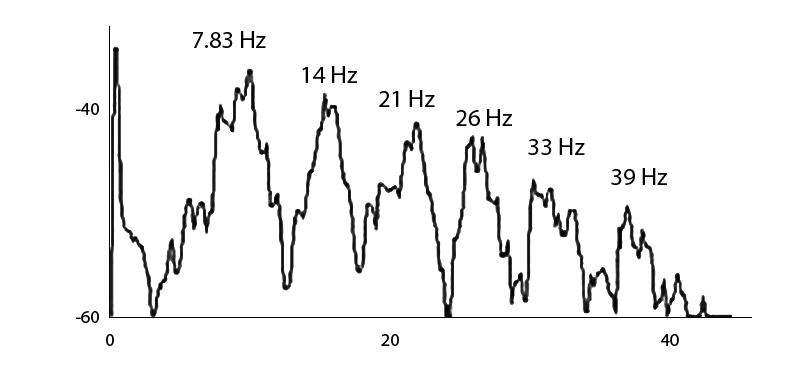
| Mains voltage | |
|---|---|
| Mains plug type |
Be the first to review “Kemp Elektroniks
SCHUMANN COMPOSER
6-Way” Cancel reply
You may also like…
Incl. 21 % TAX € 395.00
Related products
Incl. 21 % TAX € 1,845.00
Incl. 21 % TAX € 600.00
Incl. 21 % TAX € 495.00




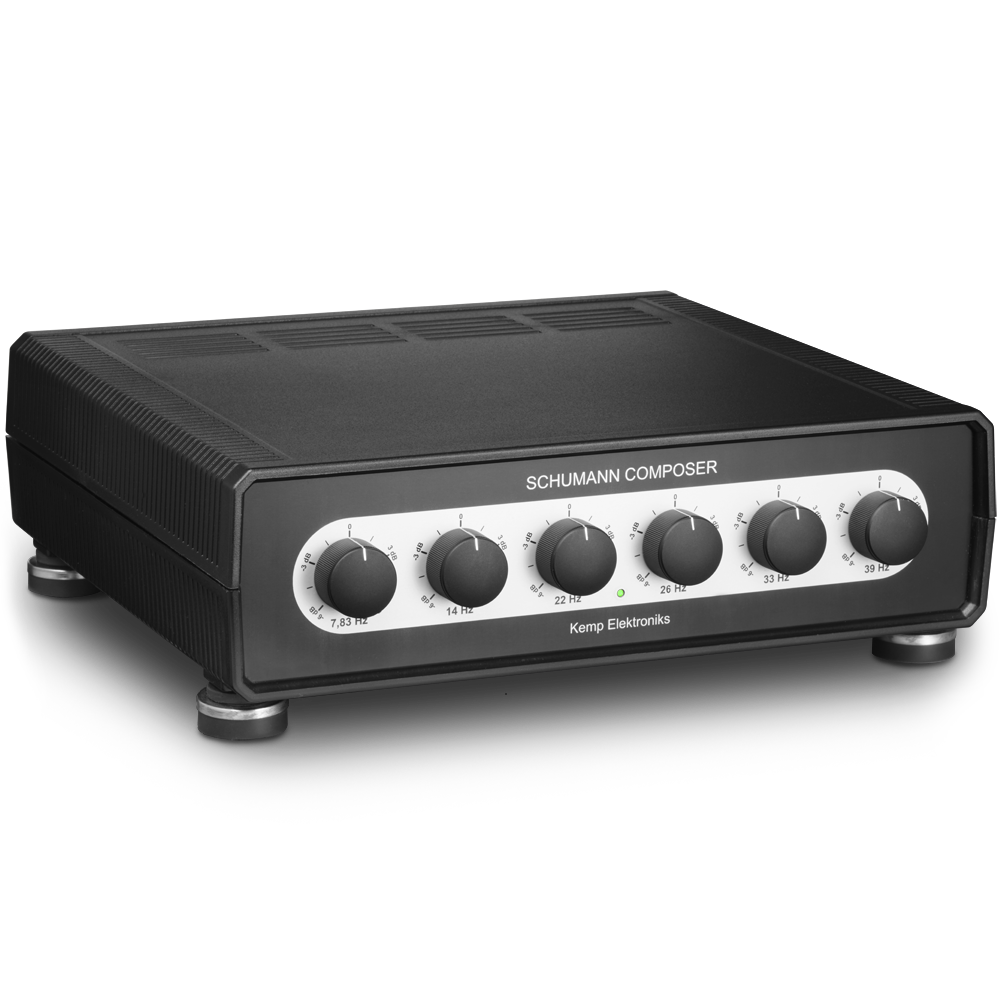
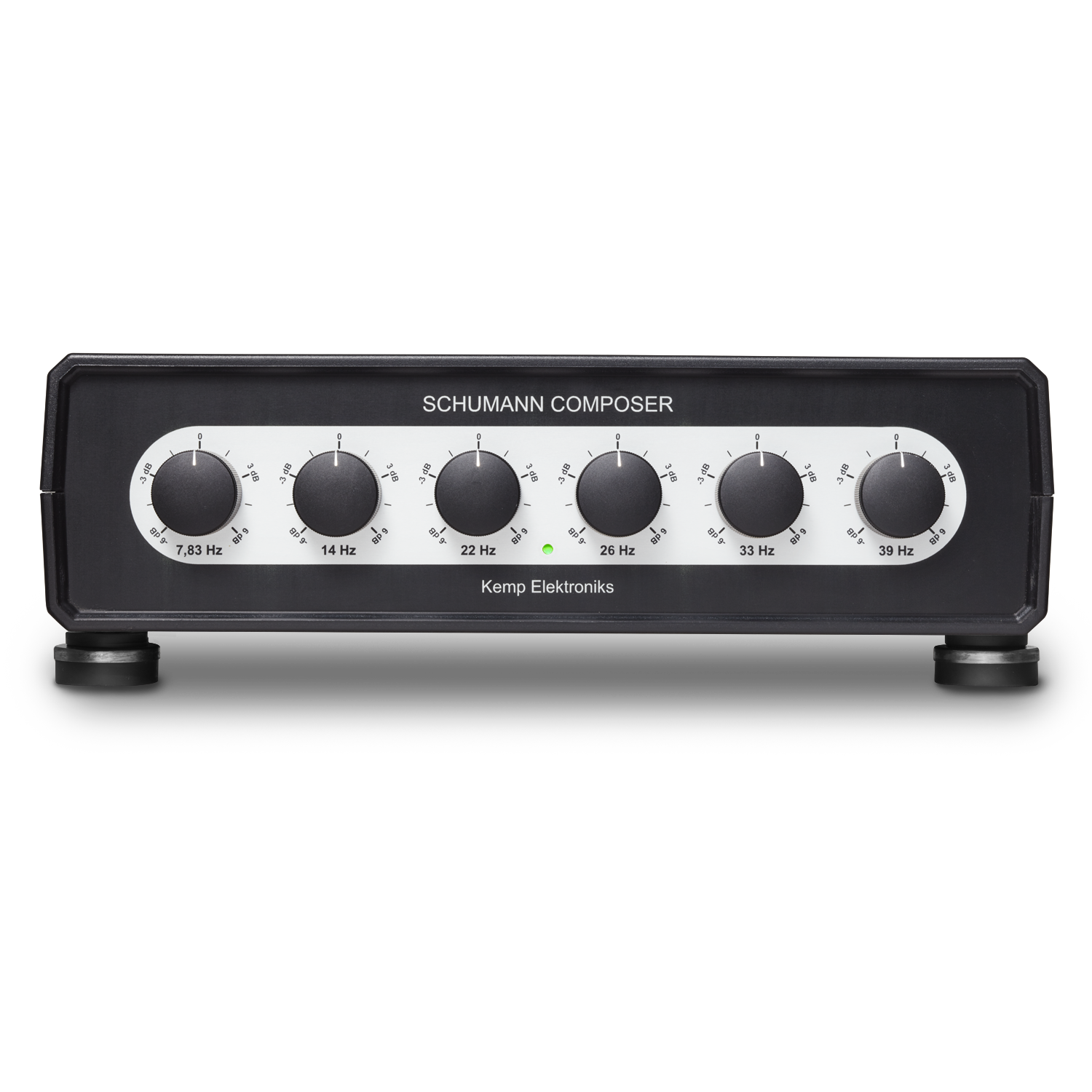
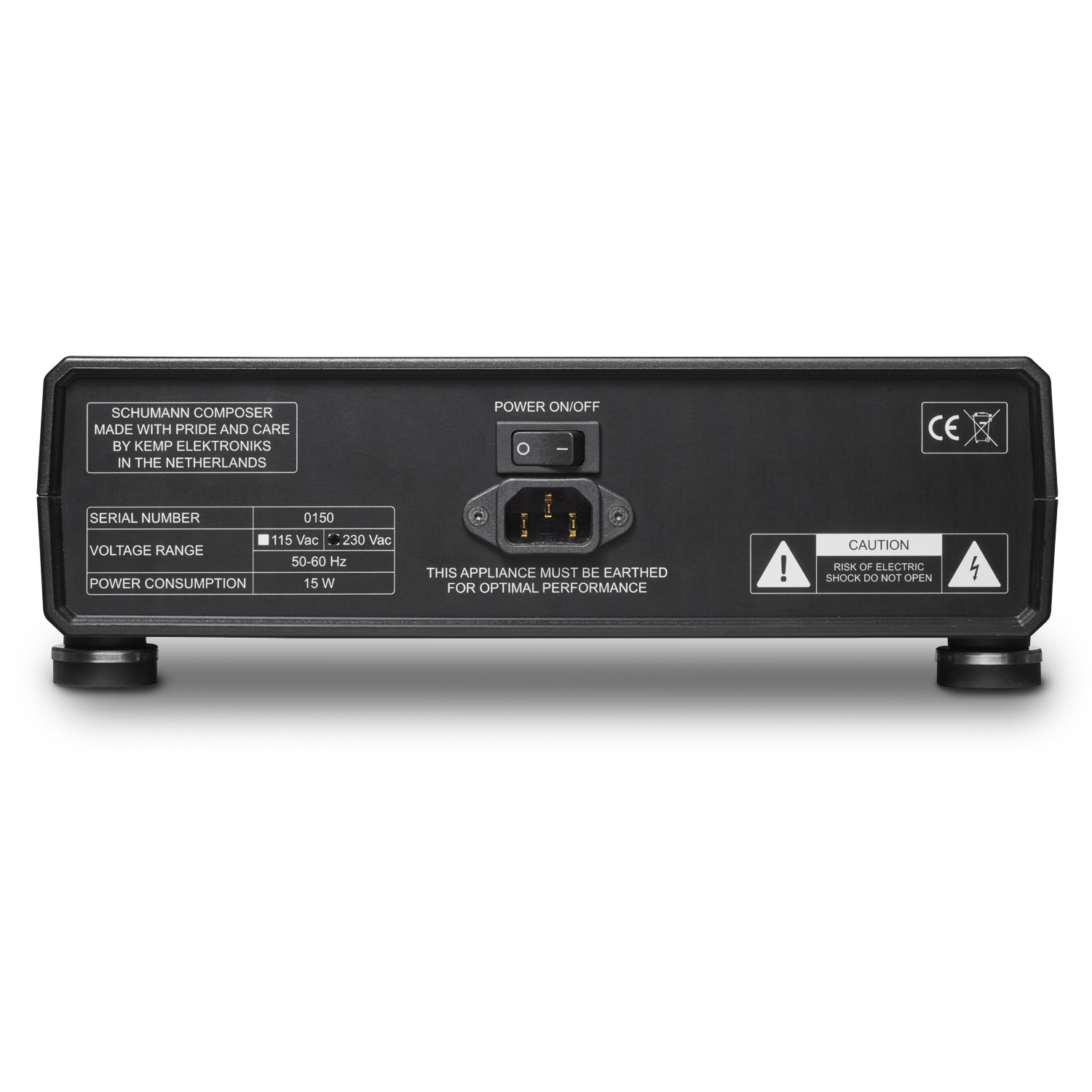
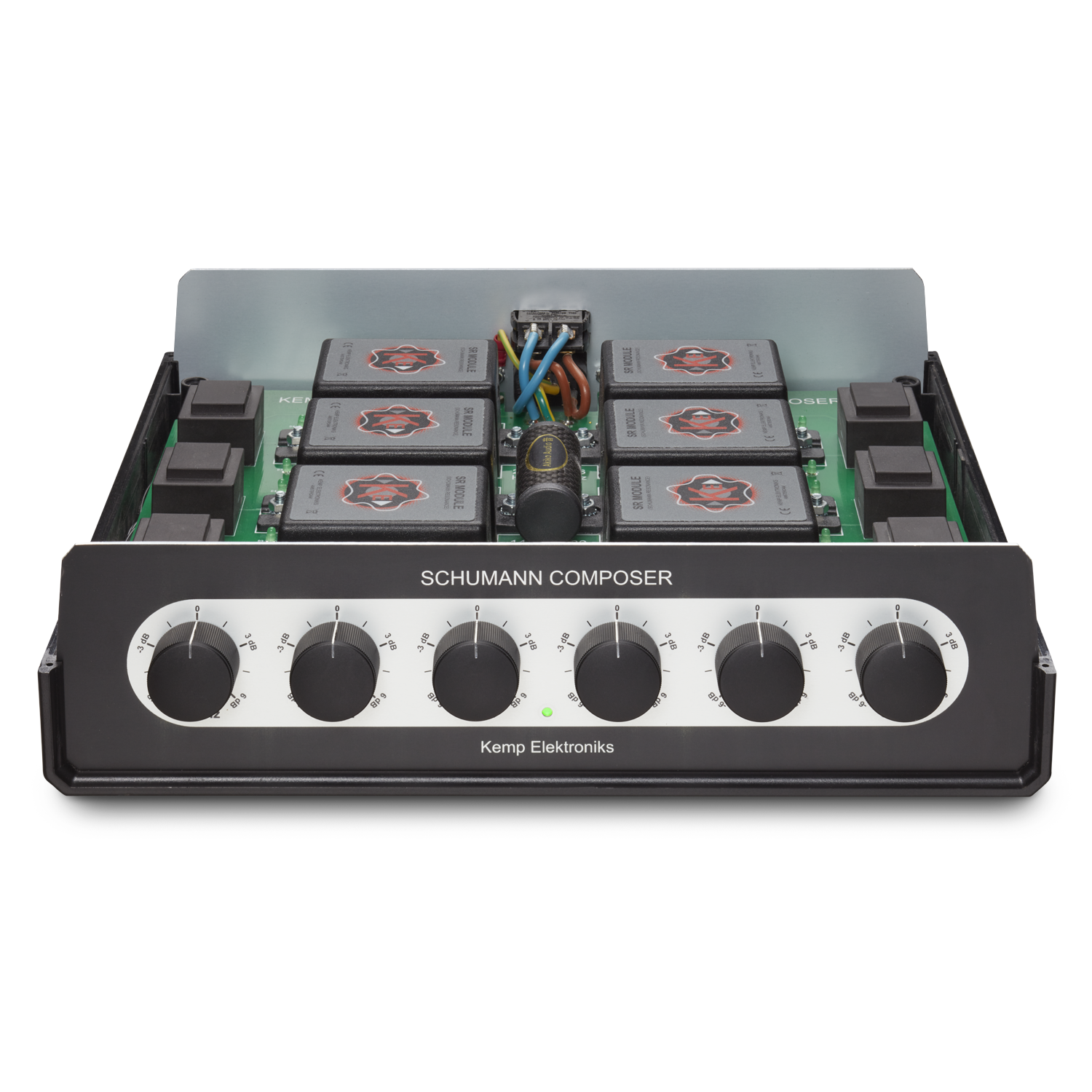
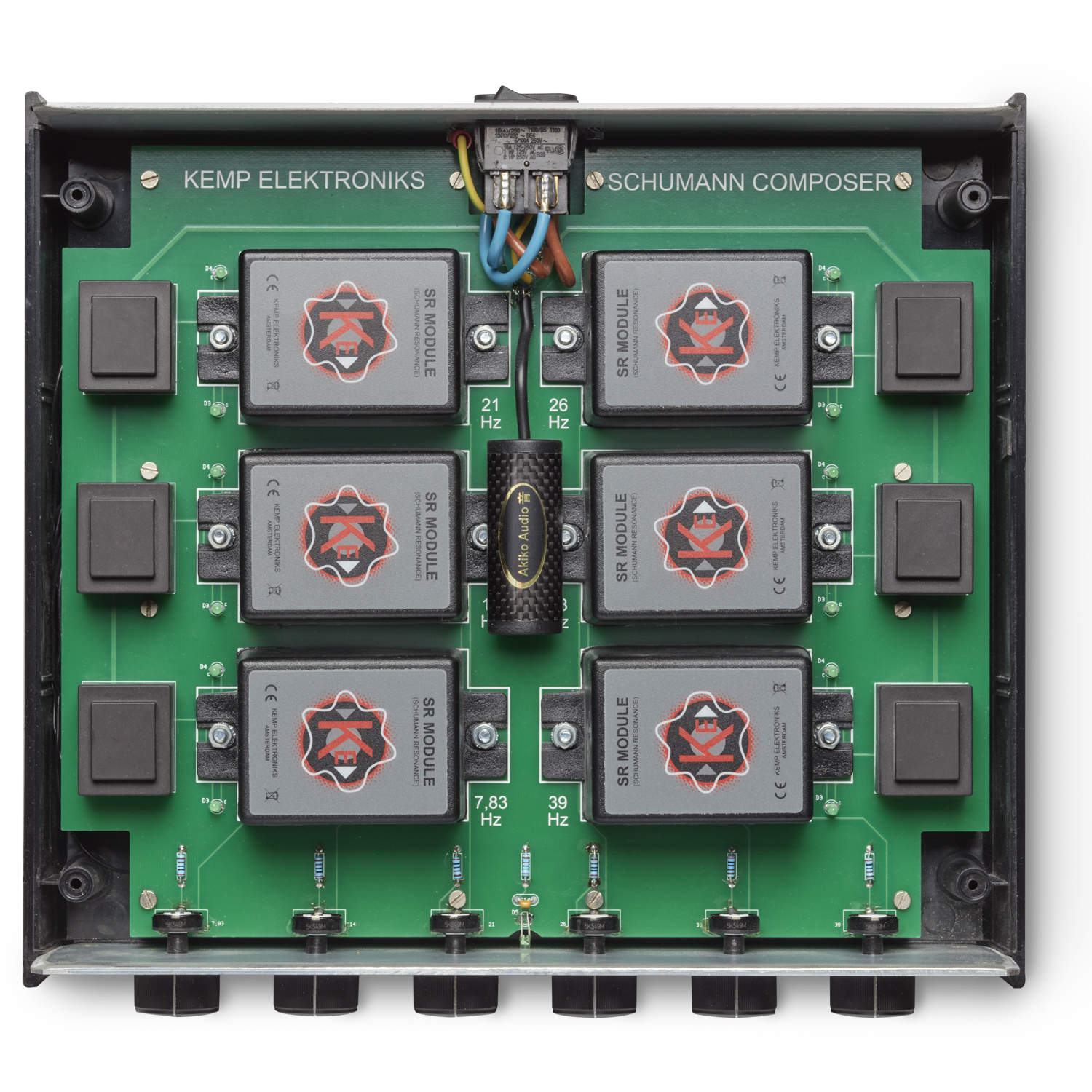
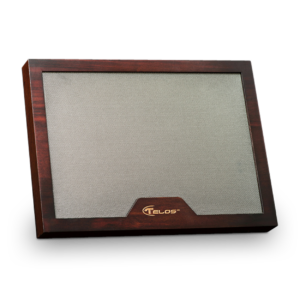

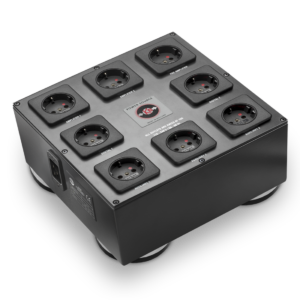
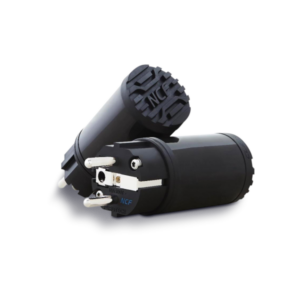

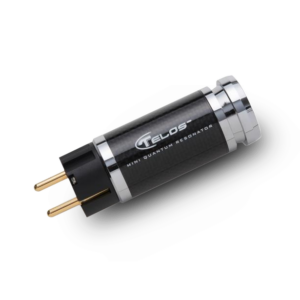
Reviews
There are no reviews yet.